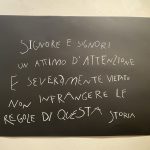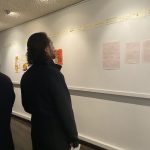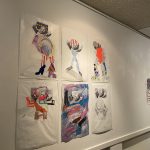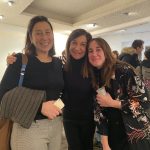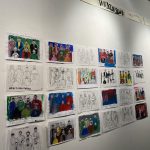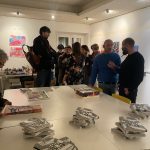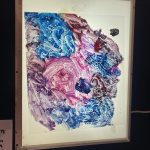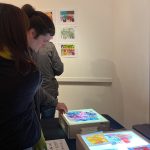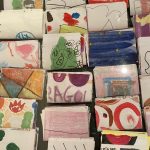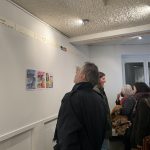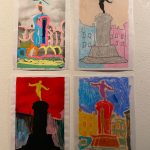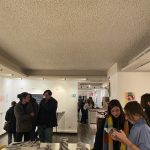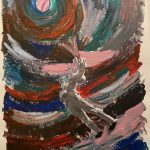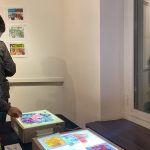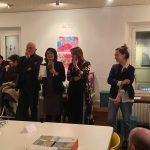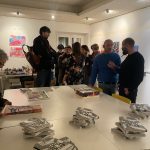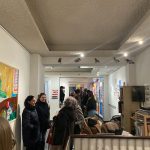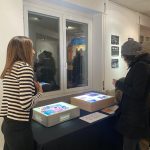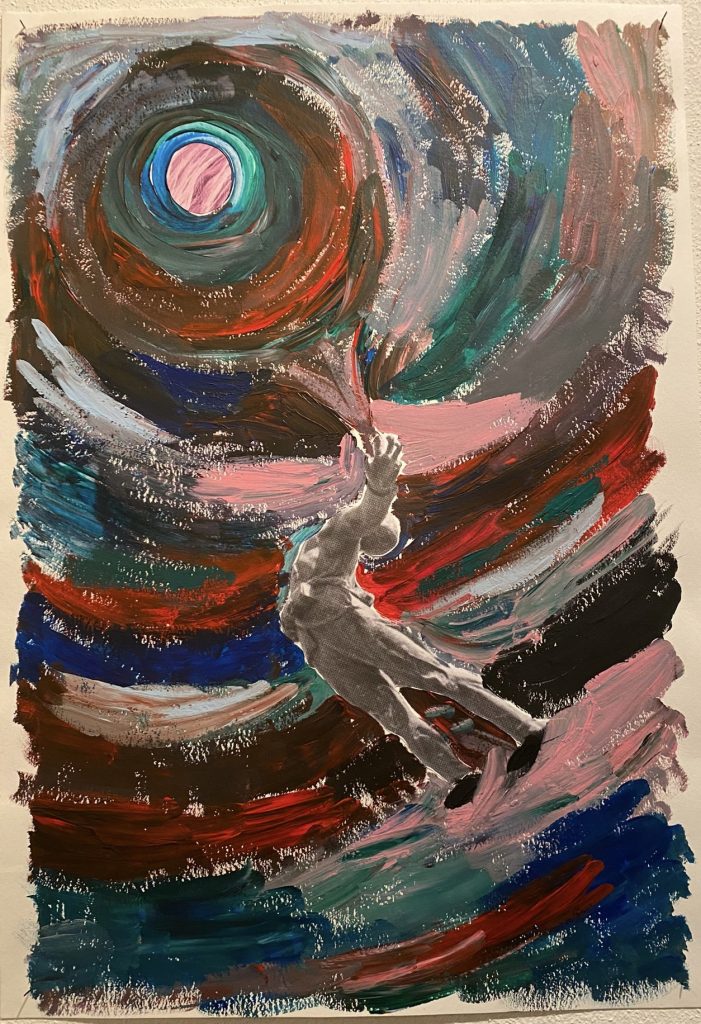
La presente mostra nasce con l’intento di raccontare il processo creativo che ha portato alla realizzazione del catalogo Oltrelante – Un’indagine di quartiere. A partire da dati di realtà (strade, palazzi, eventi storici, personaggi) ciascun artista ha elaborato, con l’ausilio dei propri mezzi espressivi più congeniali, la sua personale visione del quartiere. Scrive Alessia Tzimas:
“Questo libro non vuole avere una narrazione lineare ma restituire le visioni allegoriche degli artisti dell’atelier di Artètipi. […] Il risultato grafico vuole essere un elogio dell’attrazione, partendo da elementi concreti attraverso linguaggi visivi diversi che comunicano tra loro“.
Così, anche il percorso espositivo non segue un ritmo rigido né strettamente tematico. Abbiamo cercato di conservare l’eterogeneità dei materiali e delle tecniche utilizzate: collage, tempere, acquerelli e incisioni. Troverete tavole con esercitazioni tipografiche, studi visivi nati a partire dall’etimologia della parola “atlante” e del mito ad essa associato. E ancora, opere che ci parlano del passato e del presente del quartiere Oltretorrente: le barricate del 1922, il monumento dedicato a Filippo Corridoni, le antichità conservate al Parco Ducale e anche le reinterpretazioni di personaggi storici come gli Arditi del Popolo. Spesso le mostre appaiono come luoghi di negazione:
“Vietato parlare! Vietato toccare!“
Abbiamo, invece, voluto chiamare in causa lo spettatore come attore attivo, parte integrante dell’esposizione, il quale è chiamato a costruire e completare il percorso di allestimento con le proprie esperienza e conoscenza.
This exhibition was created with the intention of telling the creative process that led to the creation of the Oltrelante catalog – A neighborhood investigation. Starting from real data (streets, buildings, historical events, characters), each artist has developed, with the help of his own most congenial means of expression, his personal vision of the neighbourhood. Alessia Tzimas writes:
“This book does not want to have a linear narrative but to restore the allegorical visions of the artists of the Artètipi atelier. […] The graphic result wants to be a praise of attraction, starting from concrete elements through different visual languages that communicate with each other “.
Thus, the exhibition itinerary does not follow a rigid or strictly thematic rhythm. We tried to preserve the heterogeneity of the materials and techniques used: collage, tempera, watercolors and engravings. You will find tables with typographical exercises, visual studies born from the etymology of the word “atlas” and the myth associated with it. And again, works that tell us about the past and present of the Oltretorrente district: the barricades of 1922, the monument dedicated to Filippo Corridoni, the antiquities preserved in the Parco Ducale and also the reinterpretations of historical figures such as the Arditi del Popolo. Exhibitions often appear as places of denial:
“No talking! No touching!“
Instead, we wanted to involve the spectator as an active actor, an integral part of the exhibition, who is called upon to build and complete the installation process with his own experience and knowledge.

